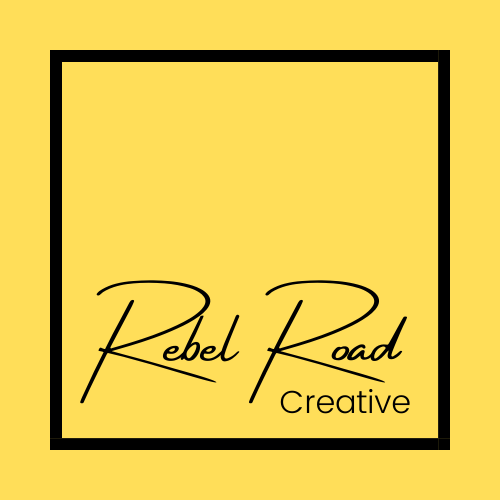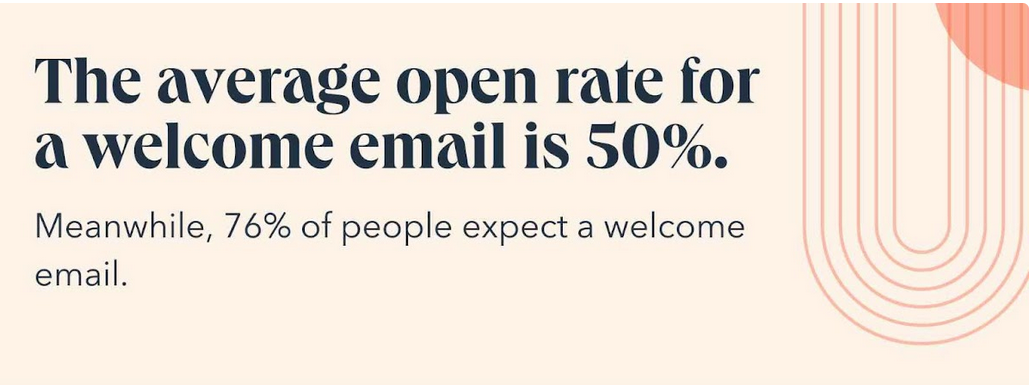How Can Content Marketers Optimize Email Performance?
(By Elizabeth Tuico) Did you know the average office worker receives 120 emails each day?
In today's digital-first world, more emails spiral through the internet than ever. According to Statista, an estimated 319.6 billion emails traveled worldwide every day in 2021. And that number is expected to increase to 376.4 billion daily emails by 2025.
Even with this volume of activity, marketers still rely on email campaigns as an important communication tool.
While email campaigns represent the foundation for most communication strategies, eliminating email fatigue and optimizing engagement remain a constant challenge for most marketers.
So how can marketers combat email fatigue and advance their brands?
How Email Marketing Can Supercharge Your Business
Despite the hurdles, email marketing persists as a company standard because of its ability to convert. It's also relatively easy to execute a campaign. Just take a look at these encouraging statistics gathered by Hubspot:
Email marketing revenue will reach almost $11 billion by the end of 2023.
64% of small businesses use email marketing to connect with customers.
Content Marketing Institute's 2021 survey on Content Management & Strategy found that email marketing software ranked #1 for content technologies in place.
Put Your Email Marketing Metrics to Work
As your organization evolves, your email marketing strategies should follow suit, allowing marketing communications to align with revenue goals.
It's a smart idea to maintain an open dialogue with the sales department. What's happening in the market? How is the competition reacting? Is cross-sales important, or does the company want more repeat business?
Ask leadership for their top priorities, too. This information will likely change from year to year, so make sure your email marketing messaging remains in step with sales and leadership.
So, that leads us to the question: How can marketers use metrics to define and redefine their goals to combat email fatigue?
#1 Delivery Rates
Delivery rates remain at the top of the funnel, representing the number of delivered emails expressed in a percentage. Marketing teams work hard to continually refine their lists for optimum performance.
According to Hubspot, solid delivery rates hover above 95%, but marketers should strive for 99%. In addition to the tried-and-true methods, mining social media channels for additional followers and brand ambassadors is a way to amp up a subscriber base.
End screens, a built-in tool from YouTube, allows creators to direct viewers to an additional action at the end of a YouTube video, such as clicking on a website link. Some brands add hyperlinks to a sign-up landing page on YouTube end screens to grow their email lists.
Consider showing a preview of your premium content on LinkedIn, Facebook or Twitter with a link to a landing page. After clicking on the link, followers see partially or fully hidden content, which can be accessed for free only after providing an email address.
#2 Bounce Rates
Bounces occupy two categories: hard and soft. Hard bounces can hurt a company's sender reputation when repeatedly used, but some soft bounces represent a pause, not an invalid email. Soft bounces often reflect a full inbox or a down server. Keeping a soft bounce on your list for a few campaigns to see if it lands is a good strategy to help improve overall delivery rates.
#3 Open Rates
An open rate equals the total number of delivered emails divided by your total number of opened emails. Though straightforward, don't count on this number to be 100% reliable.
In HTML, open rates hinge on a tiny tracking pixel, an invisible image displayed when the subscriber opens a marketing email. When the tracking pixel initiates a download from your email provider's web server, the email is considered “opened". Consequently, opened emails often aren't accurately reflected in your metrics.
An open can only be recorded if the reader's email client can display HTML with images, and that option is turned on. On the other side of the equation, Apple Mail Privacy Protection and other privacy factors can cause open rates to artificially increase. Subscriber behavior also leads to over-reporting. Thus, the ever-important open rate for email campaigns remains slippery and fickle. Marketing teams probably should not base a campaign's success solely on the open rate metric.
HOOK YOUR CUSTOMER FROM THE START
How do you encourage subscribers to open your emails? Start with a welcome email which represents one of the most widely read messages a brand distributes. A clear welcome email establishes expectation. (Transparency about how many times an organization plans to contact a subscriber is always appreciated, too.) More importantly, these messages can help predict a subscriber's subsequent behavior.
The read rates of people who open welcome emails level off over time but remain higher than those who don't open welcome emails. Subscribers who don't read the welcome message often engage with fewer messages.
Marketers can learn valuable information here by analyzing and acting on the data collected during the welcome period.
#4 Click-Through Rates (CTRs)
When a subscriber opens a link in an email, it represents a click-through. In most instances, CTRs provide the real engagement for an email campaign. In advertising emails, CTRs remain the only way to accurately measure conversion rates. How can you improve click-through rates?
DETERMINE THE BEST SEND TIMES
Determining the best send times for your campaigns remains tricky. In 2022, Databox determined that 33% of marketers send weekly emails, and 26% distribute emails multiple times per month.
CampaignMontior evaluated open rates, discovering that certain businesses retained better results on certain days:
Tuesdays: Advertising/marketing agencies, travel, marketing, and leisure.
Wednesdays: Healthcare services, food, and beverage.
Sundays: Education.
Omnisend looked at over 2 billion email messages delivered through their platform and found that:
8am emails held the highest open rate of 20.32 percent and a high click-through rate of 7.79 percent.
10am emails also enjoyed high open rates, yet they yielded a smaller number of orders than other time slots.
1pm performed strongly suggesting it might be a de facto time to send out emails.
4pm enjoyed the highest order rates.
5pm emails yielded high click-through rates.
So what cadence is right for your organization? More specifically, what days and times drive the highest open rates? For some of the best results, try segmentation by cadence to identify preferred times for email delivery.
By using automation, AI, and machine learning — which are integral services used by many email distribution providers — marketers can create subscriber engagement snapshots that determine the best times to send out communications.
# 5 Conversion Rates
Conversion rates mean everything to marketers. This rate determines the number of people who receive an email and then complete the call to action. Your email motivated the subscriber, resulting in a completed purchase, landing page visit, donation, or conference sign-up. Value content sparks better conversion.
CREATE VALUE CONTENT
Take time to consider what your ideal customers want. Sometimes, that means the customer no longer wants to hear from your brand. And that's okay.
Honoring unsubscribe requests is a critical component of the sales cycle. Taking action reflects your company's respect for the customer. Make email list cleaning or “scrubbing" a regular practice by updating your email lists. Remove invalid email addresses, unengaged/inactive subscribers, and follow through with unsubscribe requests. However, with more valuable content, you'll find less dead weight on your subscriber lists.
Discounts, new launches, and VIP access drive product sales. If you sell services, distribute emails that complement a knowledge base, such as exploring trends and providing prudent advice, to derive value.
Other popular email content includes user-generated material, loyalty program incentives, roundups from subject matter experts, birthday discounts, interviews, case studies, and FAQs.
Rotating content not only challenges marketing teams' creativity but also combats subscriber email fatigue.
#6 Churn Rate
The churn rate equals your total list size divided by the total number of unsubscribes or hard bounces during a prescribed period. For example, your team distributed 5,000 emails from your seed list in January. By December, 1,000 emails fell off your list from unsubscribes and hard bounces. The churn rate sits at 20%. How do you boost churn rates?
Craft Subject Lines That Motivate
The ever-important subject line can be tweaked to attract more interest by engaging curiosity, including offers, and using personalization. Mailchimp recommends no more than nine words for subject lines, or 60 characters.
Boost your churn rate by selecting language that packs a punch, such as:
Relax & Renew, Your Way
Go Paperless Now
Welcome to Our Simple Billing Experience
A Safe & Secure Method to Transfer Funds
Introducing: [name of product or service]
Brands can segment their customers and provide more personalization as well. A few examples of personalized email subject lines include:
Struggling with [pain point]? [company] Can Help.
[city]: Great Weekend Ideas
Want to Learn More About [topic]?
Your Exclusive Invitation to [conference, webinar, etc.]
Save $XX with [service, product, coupon, etc.]
Marketers also rely on A/B testing to sharpen subject lines. Apply two different phases to an email subject line and distribute the test emails to a sample email list divided in half (an A list and a B list). After analyzing the data, select the email subject line that performs best.
Need a Quick Fix to Combat Email Fatigue and Optimize Engagement?
It sounds counterproductive but stop sending emails for a time. Often, a pause provides enough respite to pique subscriber interest back up. After a break, distribute a deep discount coupon, relevant summary, or important information to rejuvenate engagement.
Many factors come into play when designing email campaigns. As technology evolves, subscribers' expectations will continue to fluctuate — so you should regularly reevaluate your strategy.
Elizabeth Tuico owns Rebel Road Creative, a marketing and content writing consultancy, based in Washington, DC.



